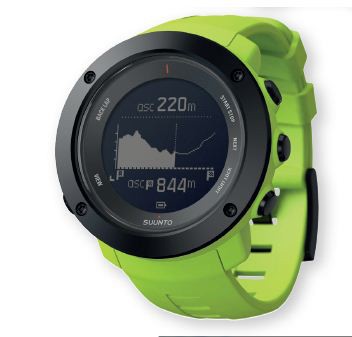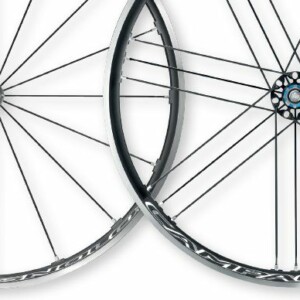The Suunto Ambit3 Vertical (RRP $679 as tested with heart rate strap) is the newest member of the Ambit3 family of sports watches. The Vertical works perfectly well as a wrist watch with most of the functions you’d expect from a digital watch including date, time, second time zone, stopwatch and countdown timer. Then it adds a suite of outdoor features such as altimeter, compass (with adjustable declination no less) and thermometer. Finally it contains a full set of sport monitoring functions including heart rate monitoring through the optional but highly recommended Bluetooth chest strap, and full GPS functionality – which includes points of interest, route tracking, latitude & longitude and Strava compatibility – and it will pair up with cycling and running specific “pods” (more on this later). Basically the Vertical is designed to be the companion for the active outdoor sporty person across most activities from hiking and biking to running and swimming.
I got into action with the lime green watch you see in the photo. Unfortunately the screen stopped working after a few days; they sent me a black replacement to finish the review with. (Even working correctly, however, I found the screen harder to read than similar devices). With several available colours, Suunto can cater to your personal tastes from conservative to extroverted. If you opt for the heart rate strap, it is supplied in a matching colour. I highly recommend the strap because it is unlikely that you already have a Bluetooth strap at home (most modern ones are ANT+) and because it is very clever. The strap’s best feature is data buffering; it records your heart rate when contact with the watch is lost and uploads the info when contact is re-established. Also the strap is less expensive with the watch than separately ($50 extra versus $129 alone)
With the Ambit3 being Bluetooth connected, rather than ANT+, it meant that all of my speed, cadence, heart rate and power senders at home were incompatible, with the exception of the power meter on one bike that connects via both ANT+ and Bluetooth. Suunto has recently swapped from ANT+ to Bluetooth so they don’t currently make accessory senders. There are four that the Ambit3 will work with: cadence, speed, power and running. Suunto promises new ones soon. In the meantime a couple of companies offer Bluetooth devices. It did pair with my power meter fine. One issue with the watch is that it can only pair to one accessory of each type at a time. This means if you have multiple bicycles you can’t have them all connected.
The Suunto interface is all about choices. Just about every auto-action is switchable. You can choose auto-pause for each sport individually. The GPS signal can be used or ignored for updating the time display. There are four recording intervals that trade lower precision for greater battery life. On saving an activity it estimates recovery time – how long until the user is back to baseline. This initial estimates appeared in line with my experience, and recovery predictions can be fine-tuned by undergoing three recovery tests to allow the watch to learn the user.
The accompanying phone “app” and website are both called Movescount. Each activity is a “move” and the summary screen does indeed give you a count (hence Movescount). When the watch and my phone were connected via Bluetooth through the app, the watch gave me a notification of each incoming text, email and phone call and completed activities were uploaded to the Movescount website (which can be linked to Strava or Training Peaks if you like). My only complaint about the process is how slow the upload is. It might be due to the plethora of data being sent; data nerds will be in heaven! I’ve never seen so many measures: 14 in total when I had the power meter connected including respiration rate, energy expenditure and VO2 estimates.
The Movescount website also contains user-generated “apps” for the watch. These short programs bring special functions like realtime hill slope calculations and ski run counters to the Ambit3. The Vertical is provided with a clamp-on cable that is used to both charge and connect the watch to a computer. Yes you can upload workouts wirelessly via your phone, but apps have to be downloaded via the hard-wired connection; and charging must occur at regular intervals as the battery can only be expected to last several days with frequent use.
After using the Suunto for a few weeks I think the steep learning curve is worth the effort. The ideal user would be someone who rides and runs and swims and hikes and … that is the outdoorsy sportsperson who isn’t a dedicated cyclist with a garage full of bikes (there are better options for people with a multitude of bikes and for people who only ride). The Ambit3 is clever, attractive and useful. If you are in the target audience for the Vertical, I suggest you check one out.


